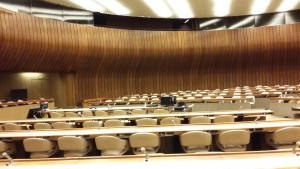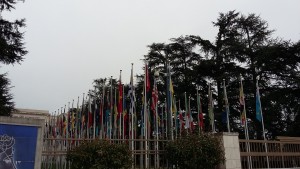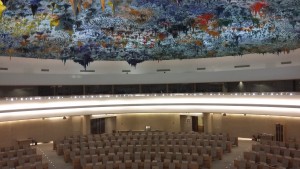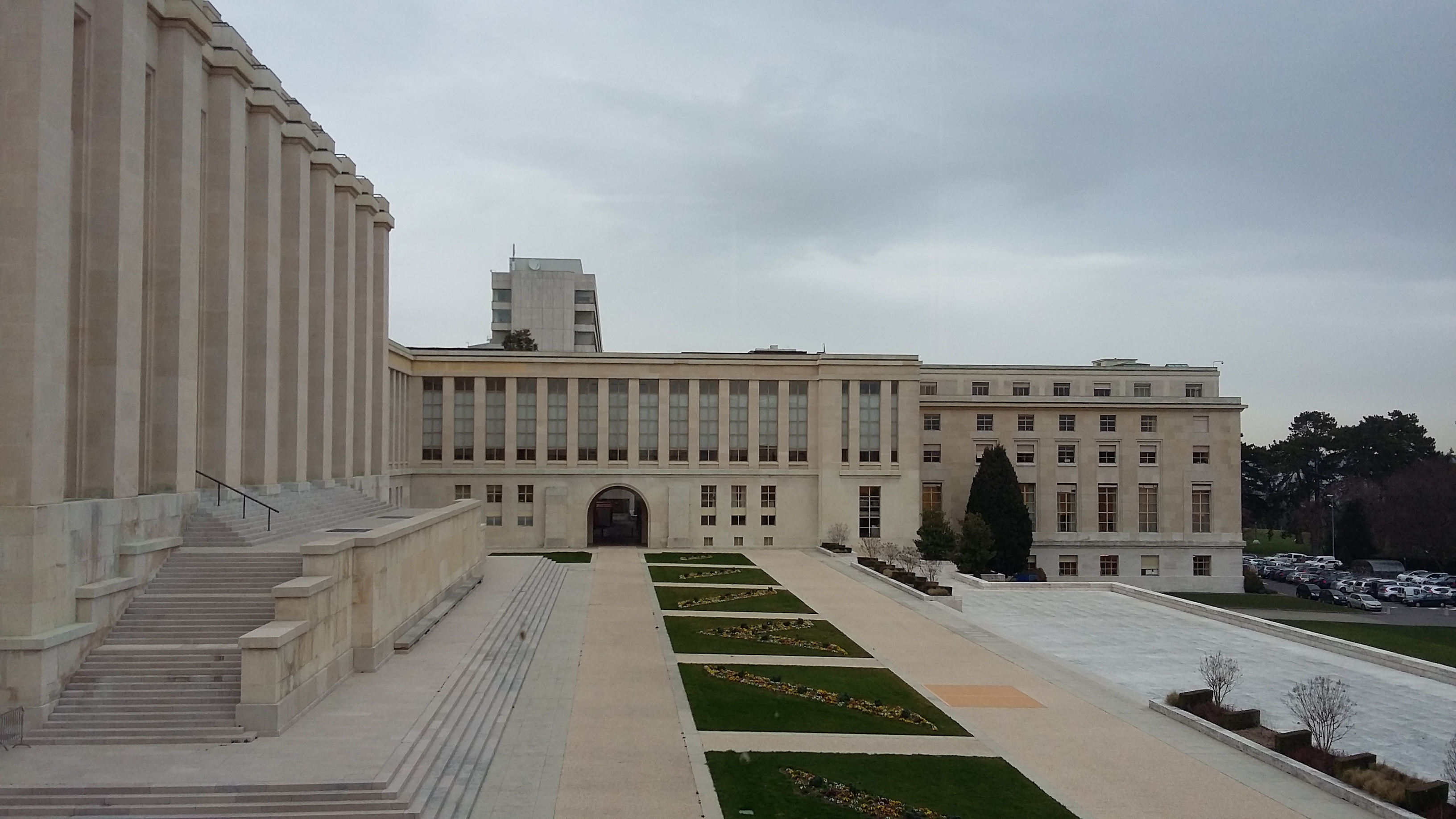If I weren’t studying physics instead of government & politics, I’d easily say that our visit to the United Nations in Geneva was as exciting as the tour of CERN the day after. Despite having believed for the longest time that there are 196 countries in the world (thanks to “guess the country” games), I was shocked to discover that there are in fact 194, of which 193 are members of the United Nations (UN) – Vatican City is the one missing out, simply because it never applied for membership.
Despite having believed for the longest time that there are 196 countries in the world (thanks to “guess the country” games), I was shocked to discover that there are in fact 194, of which 193 are members of the United Nations (UN) – Vatican City is the one missing out, simply because it never applied for membership.
 The United Nations Headquarters are of course in New York City, but Geneva hosts the second largest UN office with around 9,500 employees and works under Swiss law. Switzerland was chosen as a site for the UN due to being a neutral country, but also for being the city in which the Red Cross was founded (1863). The oldest building in the complex was originally built for the League of Nations, and on the doors within the building we could see the League of Nations insignia, that had both L.N. (League of Nations) and S.N. (Société des Nations) integrated into the design.
The United Nations Headquarters are of course in New York City, but Geneva hosts the second largest UN office with around 9,500 employees and works under Swiss law. Switzerland was chosen as a site for the UN due to being a neutral country, but also for being the city in which the Red Cross was founded (1863). The oldest building in the complex was originally built for the League of Nations, and on the doors within the building we could see the League of Nations insignia, that had both L.N. (League of Nations) and S.N. (Société des Nations) integrated into the design.
There are 300 journalists accredited to distribute news from the UN, and the six official languages of the UN are English, French, Spanish, Russian, Mandarin, and Arabic. Of course, many translators are needed for conferences, but apparently each translator works for no more than half an hour at a time, due to the intensity and stress. As jokes often don’t translate to different languages easily, and in order to keep things going swiftly, translators will say “The speaker made a joke, please laugh,” reducing time wasted!

The UN requested that all countries donate a piece of artwork, and looking around as some were still waiting to be hung up, there was a great variety in style. But one piece of art that could not be ignored was the 23,500 kg stalactite art created by Spanish artist, Miquel Barceló, on the ceiling of the Human Rights and Alliance of Civilizations Room. It cost Spain around €20 million, and if it breaks, then Spain will also be charged with those expenses, supposedly. From different angles the glass it is made from can seem differently colored, which is supposedly a representation of everybody holding different viewpoints, quite appropriate for the UN.
Other interesting (but seemingly random) facts I learnt:
- For important votes, a two-thirds majority is required, in comparison with the otherwise simple majority needed
- Over 7 million people have left Syria since 2011, and in the total figure for refugees worldwide, internally displaced persons are not counted
- Around 2,000-2,500 atomic bombs have been tested on Earth
- On average, it costs $500 to destroy a land mine, but only $6 to create one

